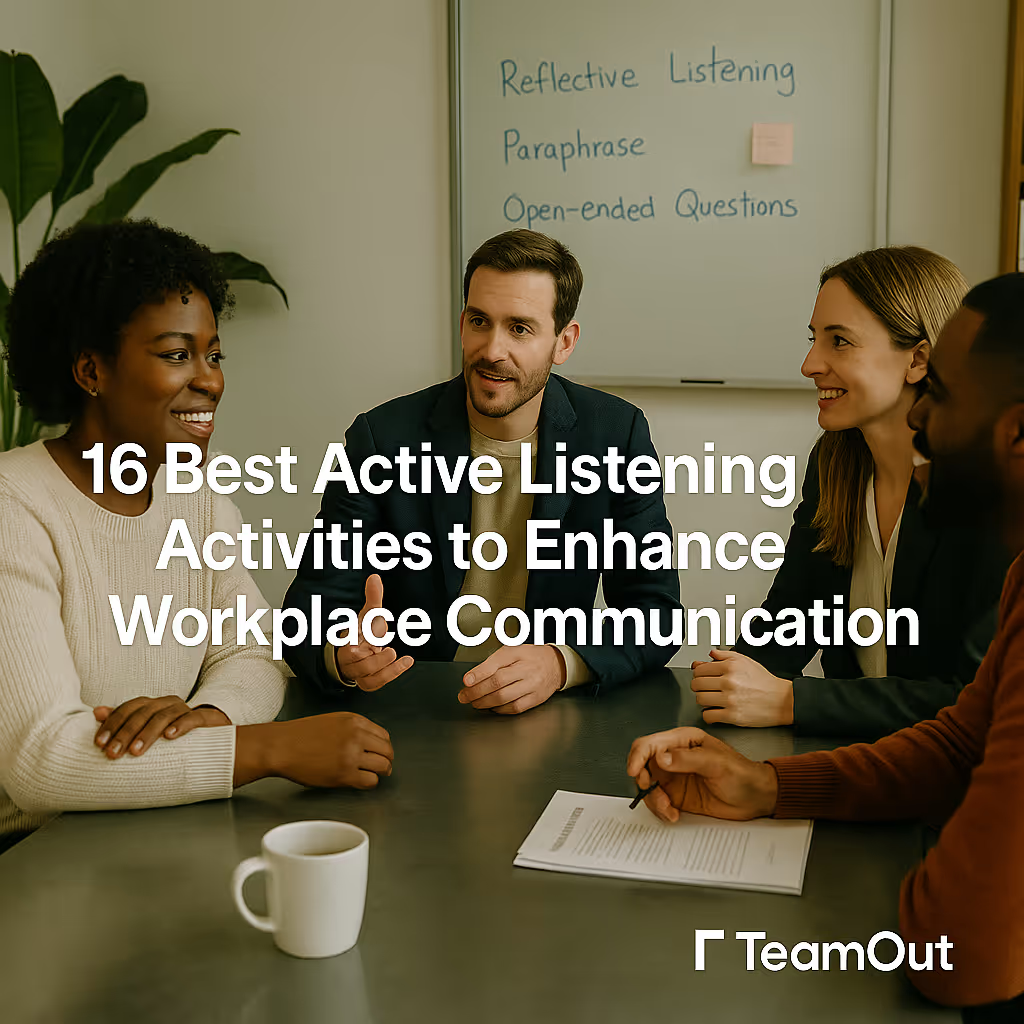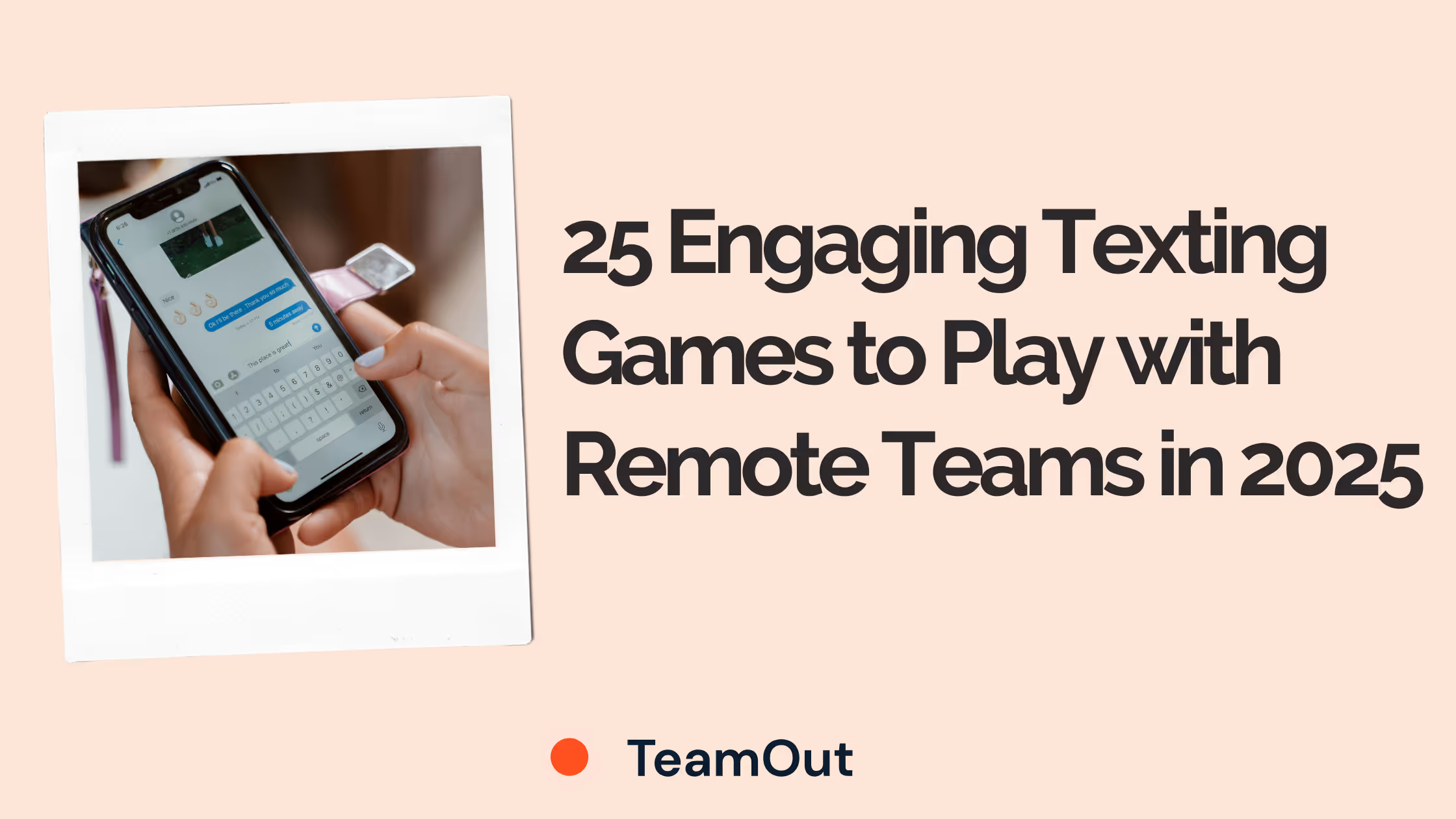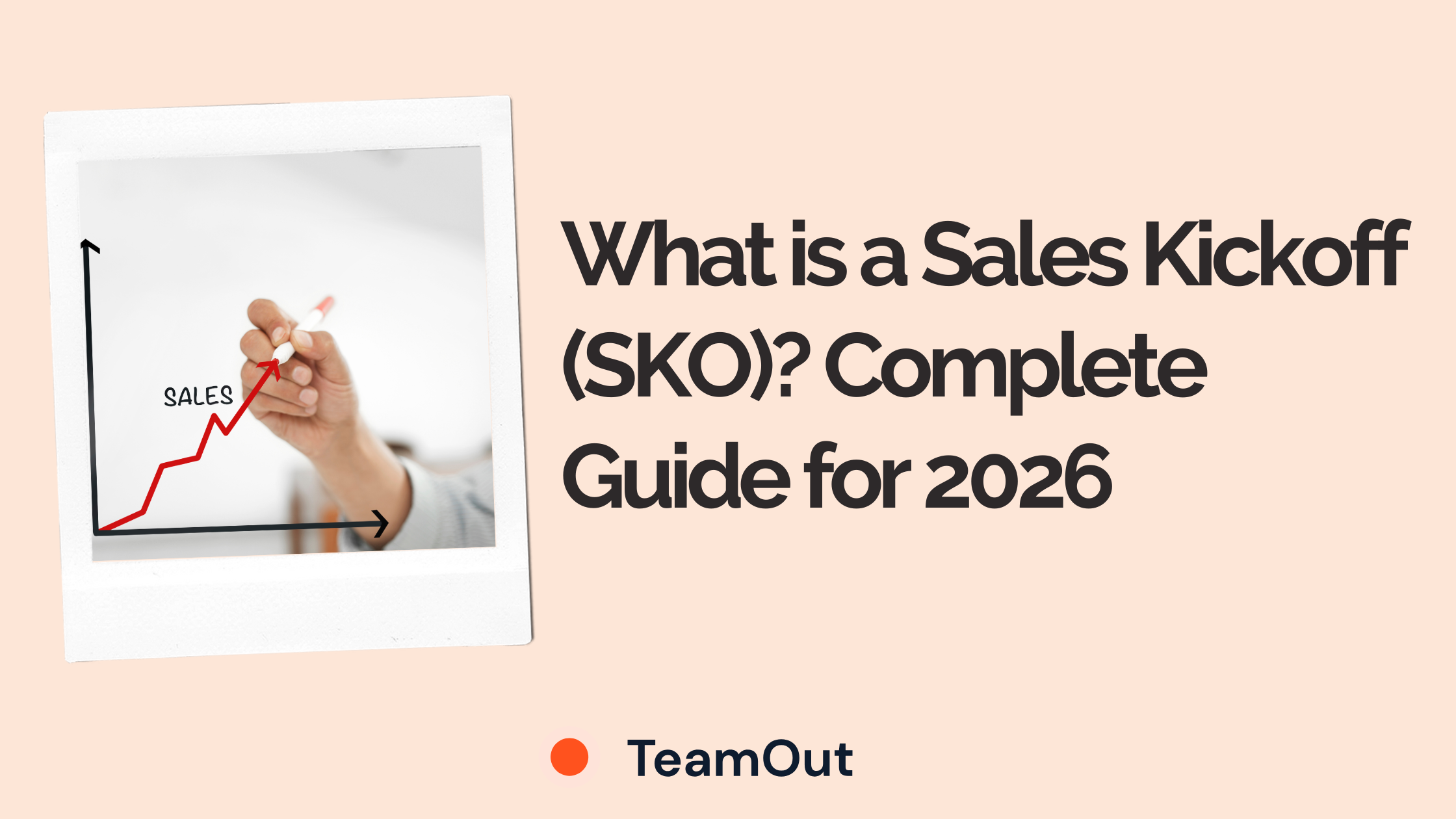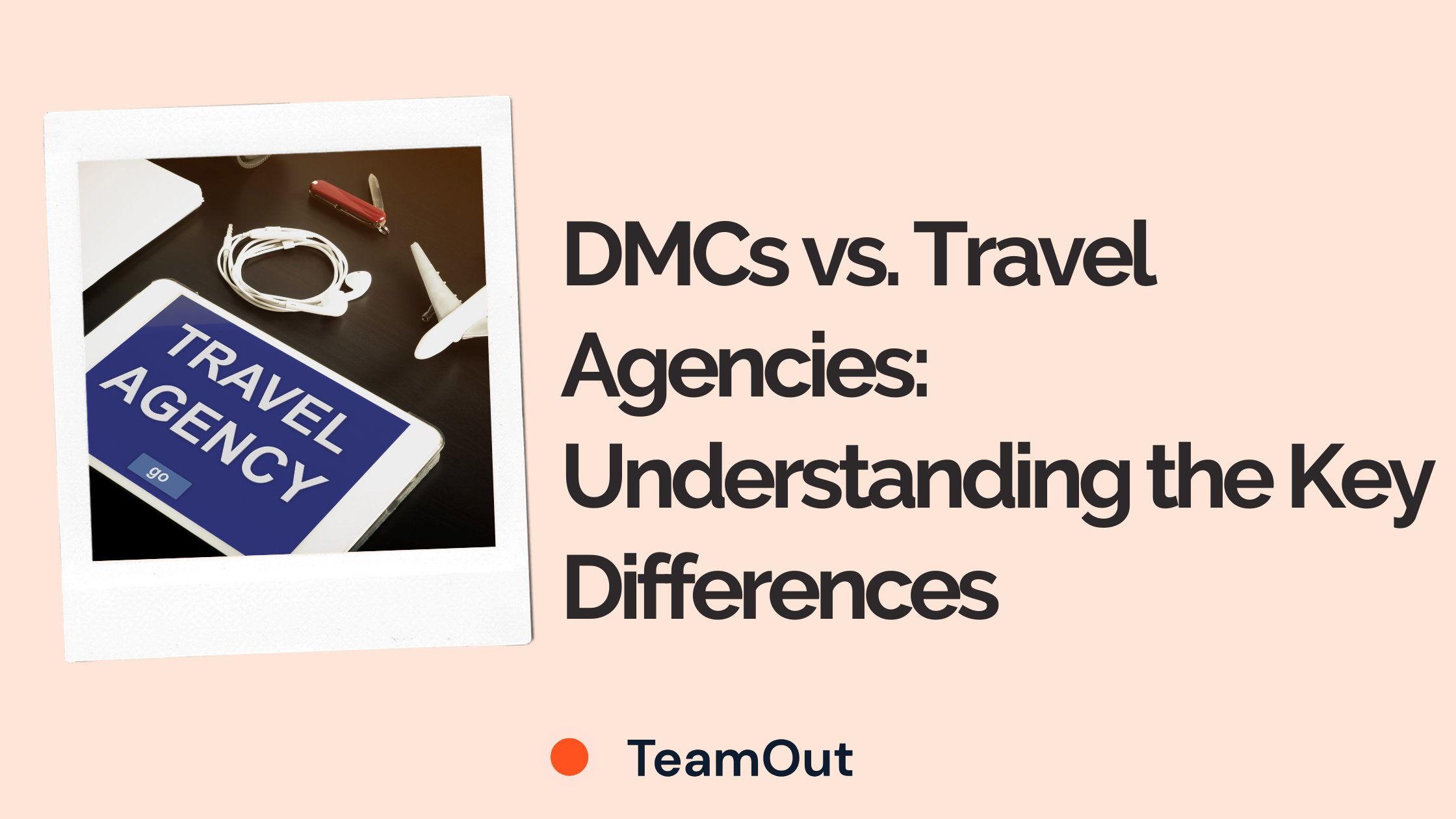Why Active Listening Activities Matter
Active listening activities are much more than helpful exercises: they are foundational to building effective communication, stronger teams, and ultimately driving business success. Research consistently shows that practicing active listening skills leads to measurable improvements in organizational performance, employee engagement, and workplace relationships. Check out the multiple benefits these activities bring:
Boosts Team Performance and Productivity
According to the Vistage Research Center, active listening exercises help teams absorb instructions, clarify expectations, and minimize misinterpretation, leading to more accurate task execution and higher productivity. When employees truly hear and understand one another, by focusing on both verbal cues and nonverbal cues like body language and eye contact, they make fewer mistakes and deliver better results.
Enhances Clarity and Reduces Costly Errors
Practicing active listening skills ensures that everyone receives and processes information accurately, which is critical in fast-paced professional environments. Studies by WordsRated show that when listeners ask clarifying questions and reflect on what they’ve heard, teams avoid misunderstandings by 40%, which could otherwise lead to project delays or rework, directly benefiting business outcomes
Facilitates Better Problem-Solving and Innovation
By using active listening activities like role playing and group games, teams learn to surface underlying issues, gather diverse perspectives, and generate creative solutions. Listening deeply, which means paying attention to both words and underlying thoughts, enables teams to address root causes rather than symptoms, fueling innovation and continuous improvement.
Improves Leadership and Decision-Making
Leaders who practice active listening are better equipped to understand employee needs, anticipate challenges, and make informed decisions. Research from Harvard Business Review and organizational psychology journals highlights that leaders with strong listening skills are seen as more competent, trustworthy, and effective at guiding teams toward shared goals.
Creates a Positive, Collaborative Workplace Culture
Active listening activities—whether in a small circle or a large group—help create an environment where everyone’s voice is heard. This sense of inclusion and psychological safety leads to stronger relationships. In a recent Salesforce Research study stated by Forbes, over 1,500 business professionals were surveyed on value-driven leadership and workplace equality. The study showed that when an employee feels heard, they are 4.6 times more likely to feel empowered to perform to the best of their ability.
“Listening is associated with and a likely cause of desired organizational outcomes in numerous areas, including job performance, leadership, quality of relationships, job knowledge, job attitudes, and well-being.” — Annual Review of Organizational Psychology and Organizational Behavior
16 Proven Active Listening Activities You Can Implement Today
1. The Mirror Method
The Mirror Method is an active listening activity where participants practice reflecting on what they hear to ensure understanding and demonstrate empathy. This exercise helps build effective communication skills by separating your thoughts from the speaker’s words, utilizing both verbal and nonverbal cues, such as eye contact and attentive body language.
Step-by-Step:
- Partner A speaks for 2-3 minutes about a current work challenge or project while Partner B listens without interrupting.
- Partner B summarizes what they heard using phrases like “What I understand is…” and checks for accuracy.
- Switch roles and repeat the process.
Duration: 10-15 minutes
Group Size: Pairs, up to 30 participants
Why it Works for Teams: This activity helps teams practice active listening, improves relationships, and ensures everyone feels heard, leading to more effective conversations and reduced misunderstandings.

2. The Question Ladder
The Question Ladder is an active listening exercise that teaches participants to ask progressively deeper questions to understand a workplace situation fully. By focusing solely on asking questions, listeners improve their listening skills and avoid jumping to conclusions or solutions.
Step-by-Step:
- One person presents a workplace challenge; listeners can only ask questions, starting broad and becoming more specific.
- Listeners continue questioning to uncover details, focusing on understanding before offering any advice.
- The presenter reflects on insights gained from the questioning.
Duration: 15-20 minutes
Group Size: Up to 40 participants (3-4 per team)
Why it Works for Teams: This activity builds analytical thinking and empathy, making teams more effective at problem-solving and fostering open, positive communication.

3. The Emotion Detective
The Emotion Detective is an active listening activity where participants identify both the factual and emotional content in a story. This exercise helps listeners become more aware of nonverbal cues like facial expressions and tone, enabling them to respond with greater empathy.
Step-by-Step:
- Partner A shares a workplace scenario with emotional elements.
- Partner B listens for both the facts and the emotions, then reflects both aspects.
- Discuss how recognizing emotions might change future approaches.
Duration: 12-15 minutes
Group Size: Pairs, up to 30 participants
Why it Works for Teams: This activity strengthens emotional intelligence, improves team relationships, and helps manage sensitive conversations more effectively.
4. The Assumption Checker
The Assumption Checker is an active listening exercise where participants identify and challenge their assumptions about a complex situation. By surfacing and discussing these assumptions, teams learn to listen more openly and avoid misinterpretations.
Step-by-Step:
- Present a multi-layered scenario and have each participant write down their initial assumptions.
- One person shares their interpretation while others identify assumptions and discuss their impact.
- Explore strategies for listening without letting assumptions interfere.
Duration: 18-20 minutes
Group Size: Up to 25 participants (teams of 4-5)
Why it Works for Teams: This activity helps teams uncover hidden biases, fosters open-mindedness, and leads to more effective communication and collaboration, especially in diverse groups.

5. The Perspective Prism
The Perspective Prism is an active listening activity that enables participants to adopt and articulate different stakeholder viewpoints in a workplace scenario. By role-playing and focusing on understanding other perspectives, teams develop cognitive flexibility and stronger listening skills.
Step-by-Step:
- Assign each participant a stakeholder role in a multi-stakeholder scenario.
- Each person presents their perspective while others listen and ask clarifying questions from their assigned viewpoints.
- The group discusses how active listening changed their understanding of differing perspectives.
Duration: 25-30 minutes
Group Size: Up to 40 participants (6-8 per team)
Why it Works for Teams: This exercise improves empathy, encourages open dialogue, and helps teams find creative solutions by understanding and integrating diverse ideas and interests. For more inspiration, explore these team-bonding activities.
6. The Distraction Challenge
The Distraction Challenge is an active listening exercise designed to help participants practice maintaining focus and attention in environments filled with mild distractions. This activity strengthens listening skills by training the listener to filter out background noise and visual cues, making them more effective in real-world, high-stress situations.
Step-by-Step:
- Set up mild distractions (like soft music or visual movement) and have Partner A share a detailed work process or update.
- Partner B practices active listening, summarizes what they heard, and asks clarifying questions.
- Gradually increase distractions and discuss strategies that helped maintain focus.
Duration: 15-18 minutes
Group Size: Pairs, up to 20 participants
Why it Works for Teams: This activity helps teams improve concentration, making them more resilient and effective in open office settings, virtual meetings, or any environment where distractions might otherwise hinder communication.
7. The Nonverbal Navigator
The Nonverbal Navigator is an active listening activity that emphasizes the importance of nonverbal cues like facial expressions, body language, and eye contact in effective communication. Participants learn to integrate what they hear with what they see, leading to a deeper understanding of the speaker’s message.
Step-by-Step:
- Person A shares a workplace scenario with emotional content while Person B listens and observes both words and nonverbal cues.
- Person C takes notes on nonverbal communication and shares their observations.
- The group discusses how nonverbal cues changed their understanding of the conversation.
Duration: 20-25 minutes
Group Size: Groups of 3, up to 30 participants
Why it Works for Teams: This exercise helps teams practice active listening by tuning into both verbal and nonverbal signals, building empathy, and improving relationships in any professional setting.

8. The Paraphrase Pyramid
The Paraphrase Pyramid is an active listening exercise where participants practice paraphrasing a speaker’s message in their own words, building a “pyramid” of understanding as each person adds their interpretation. This activity helps improve listening skills and ensures that everyone in the group accurately grasps the main ideas.
Step-by-Step:
- Person A presents a complex workplace issue; Person B paraphrases the main points.
- Person C paraphrases Person B’s version, and the process continues around the group.
- Person A confirms which paraphrases were most accurate and helpful.
Duration: 20-22 minutes
Group Size: Up to 25 participants (3-4 per team)
Why it Works for Teams: This activity enhances effective communication, clarifies misunderstandings, and demonstrates the value of listening carefully before responding, making it great for project briefings and strategic discussions.

9. The Solution Suspension
The Solution Suspension is an active listening activity where participants resist the urge to offer solutions, instead focusing on understanding the problem from all angles. By suspending judgment, teams practice active listening and generate more thoughtful, effective solutions.
Step-by-Step:
- One person presents a workplace problem; listeners only ask questions and reflect understanding for 10 minutes.
- Only after thorough exploration do participants offer solutions.
- The group compares the quality of solutions generated after deep listening versus quick responses.
Duration: 18-20 minutes
Group Size: Up to 40 participants (4 per team)
Why it Works for Teams: This exercise helps teams break the habit of rushing to solutions, leading to more creative problem-solving and stronger relationships built on empathy and understanding.
10. The Interruption Awareness
The Interruption Awareness activity helps participants recognize and reduce their tendency to interrupt, fostering patience and more complete communication. By tracking both urges and actual interruptions, participants become more mindful listeners.
Step-by-Step:
- Person A shares a workplace experience while Person B notes every urge to interrupt, and Person C tracks actual interruptions.
- The group discusses triggers and effects of interruptions.
- Repeat the conversation, consciously preventing interruptions.
Duration: 15-18 minutes
Group Size: Up to 30 participants (3 per team)
Why it Works for Teams: This activity improves listening skills, encourages equal participation, and helps create a positive, open environment where everyone’s ideas are valued.

11. The Context Collector
The Context Collector is an active listening exercise where participants learn to gather complete context before forming opinions. By asking open questions and seeking background details, listeners practice active listening and avoid premature judgments.
Step-by-Step:
- Partner A presents only the basic facts of a workplace scenario; Partner B asks questions to gather more context.
- Reveal how additional context changes understanding and reflect on shifting assumptions.
- Switch roles with a new scenario.
Duration: 16-20 minutes
Group Size: Pairs, up to 20 participants
Why it Works for Teams: This activity strengthens decision-making and conflict resolution skills by ensuring all relevant information is considered, leading to more effective communication and better outcomes.
12. The Empathy Bridge
The Empathy Bridge is an active listening activity where participants practice connecting with the speaker’s emotions while maintaining professional boundaries. This exercise helps listeners demonstrate empathy without becoming overwhelmed by others’ challenges.
Step-by-Step:
- Partner A shares a frustrating workplace experience, focusing on the emotional impact.
- Partner B listens, identifies with the emotion, and reflects both the situation and feelings.
- Discuss how empathy enhances understanding and explore ways to maintain healthy boundaries.
Duration: 14-16 minutes
Group Size: Pairs, up to 35 participants
Why it Works for Teams: This activity builds emotional intelligence, fosters supportive relationships, and helps create a psychologically safe environment where team members feel understood and valued.
13. The Clarification Champion
The Clarification Champion is an active listening exercise where participants practice asking for clarification in a way that feels natural and positive, especially when discussing complex topics. This activity helps listeners develop the skill to seek understanding without appearing confused, using open-ended questions and attentive body language.
Step-by-Step:
- One person explains a complex process, policy, or technical concept.
- Listeners ask for clarification using phrases like “Help me understand…” or “Can you give me an example of…”.
- The group discusses which clarification requests felt most helpful and how they improved understanding.
Duration: 18-22 minutes
Group Size: Up to 25 participants (3-4 per team)
Why it Works for Teams: This exercise improves listening skills, encourages open communication, and ensures everyone is on the same page, essential for technical briefings, training, and high-stakes projects.

14. The Silence Strategist
The Silence Strategist teaches teams to use strategic silence to encourage deeper reflection and sharing from the speaker. By allowing space after someone finishes speaking, listeners show attention, respect, patience, and focus, prompting the speaker to share more thoughts or ideas.
Step-by-Step:
- Partner A shares their thoughts on a workplace challenge or opportunity.
- Partner B practices active listening by maintaining comfortable silence (counting to five) before responding.
- Discuss how the use of silence affected the depth and quality of the conversation.
Duration: 12-15 minutes
Group Size: Pairs, up to 40 participants
Why it Works for Teams: This activity helps teams become more comfortable with pauses, leading to richer, more thoughtful discussions and making everyone feel heard and valued.
15. The Feedback Loop
The Feedback Loop is an active listening exercise where participants ensure clear understanding by summarizing and clarifying instructions or information. This activity uses listening skills and attention to detail to prevent misunderstandings and reinforce effective communication.
Step-by-Step:
- One person gives detailed instructions for a process or project.
- Each listener summarizes their understanding, and the original speaker clarifies or fills gaps.
- Repeat until everyone has a complete and accurate understanding.
Duration: 20-25 minutes
Group Size: Up to 30 participants (4-5 per team)
Why it Works for Teams: This activity is great for project briefings and training, as it ensures everyone is aligned and reduces costly errors due to miscommunication.
16. The Story Synthesizer
The Story Synthesizer is an active listening activity where participants listen to multiple stories or experiences and then synthesize key themes, patterns, and lessons. This exercise helps teams practice active listening and develop the skill to find deeper meaning and shared ideas across individual experiences.
Step-by-Step:
- Each participant shares a brief workplace experience related to a common theme (like teamwork or change).
- The group listens for recurring patterns, challenges, and insights, then synthesizes these into key themes.
- Discuss how listening for patterns enhanced understanding and how these insights might inform future strategies.
Duration: 25-30 minutes
Group Size: Up to 40 participants (5-6 per team)
Why it Works for Teams: This activity improves strategic thinking, helps identify trends, and builds a sense of shared purpose by connecting individual stories to broader organizational goals.
Making Active Listening Your Competitive Advantage
These 16 active listening tools can (and will!) transform your workplace communication, but knowing them isn't enough. You need to practice them consistently until they become second nature.
Start with just one or two activities that resonate most with your current challenges. Maybe your team struggles with interruptions, so you begin with The Interruption Awareness exercise. Or perhaps you're dealing with complex stakeholder situations, making The Perspective Prism your starting point.
The key is consistency. You can't expect to master active listening by running through these exercises once. Just like any skill worth developing, this requires regular practice and intentional application in your daily work interactions.
Remember, every conversation is an opportunity to practice active listening. Your next team meeting, client call, or one-on-one discussion becomes a chance to apply these techniques and strengthen your listening muscles.
Your employees will notice the difference. They'll feel more heard, more understood, and more valued. Your projects will run smoother, your conflicts will resolve faster, and your team's innovation will flourish.
The question isn't whether you can afford to invest time in developing these skills. The question is whether you can afford not to. Need help putting team-building initiatives into practice? TeamOut has a track record of organizing over 1,000 corporate retreats and events, and a satisfaction rate of 95%. We know what we're doing. Contact us today and start planning the team offsite or group meeting that will exceed everyone's expectations!
Your next conversation starts now. Which listening technique will you try first?

















.webp)


